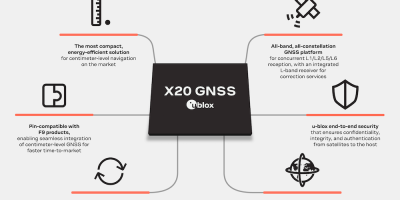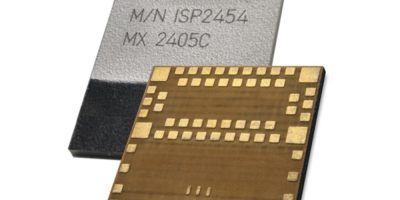u-blox has announced its new X20 all-band high-precision GNSS platform that raises the bar for accuracy, performance, and security. Building on the success of the company’s popular F9 high-precision GNSS platform, this new generation addresses the current high-precision GNSS needs around the world, and its future-proof design is equipped to also handle new and emerging technologies and standards. The new platform is designed for industrial automation, automotive, and other applications that require centimetre-level position accuracy in challenging environments, as well as time synchronisation applications for critical infrastructure systems.
X20 is an all-band (L1/L2/L5/L6) platform with an integrated L-band receiver. As it includes all available GNSS satellite signals, it offers the highest precision positioning even in difficult signal environments. It supports the basic L1 and L2 frequencies, along with the subsequently added L5 band. The L5 band operates at lower frequencies than the L1 and L2 bands and benefits from improved signal properties, making L5 signals inherently more robust. The u-blox X20 also adds support for the L6 band. This band is used not only for navigation services, but also correction services that help make positioning estimations more precise.
The new u-blox X20 platform provides maximum flexibility, with built-in support for all types of correction services. It not only supports local base stations and correction types such as RTK (real-time kinematic), Network RTK, and PPP-RTK, but also introduces the option to utilise PPP (precise point positioning) corrections. The platform’s versatility and scalability allow its users to select the optimal solution for their application, balancing cost and precision. Potential applications are multifold, from port logistics operations to machine control in construction as well as emerging industrial applications, for instance UAVs, and ground robotics such as lawnmowers.
The u-blox X20 platform is software upgradeable. This serves to future-proof the system, as users will be able to adapt their system should there be any evolutions in the relevant technologies and standards.
X20 was designed to provide the utmost integrity and security. The platform comes with end-to-end security functions, including system authentication via secure boot and secure firmware update, message authentication, and encryption with built-in secure root of trust (RoT). The platform also supports Galileo OSNMA authentication combined with advanced jamming and spoofing detection and mitigation.







